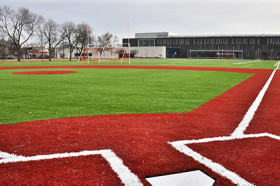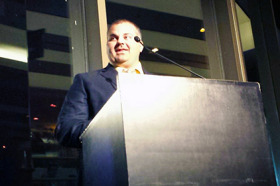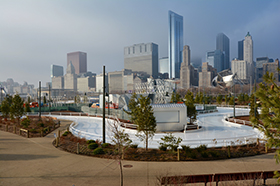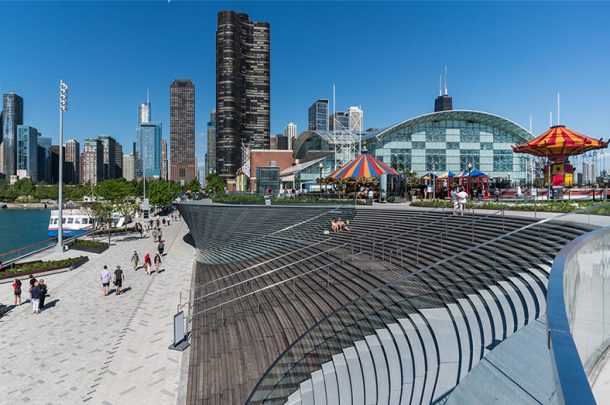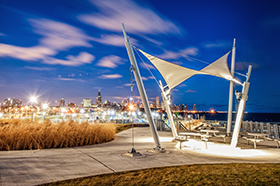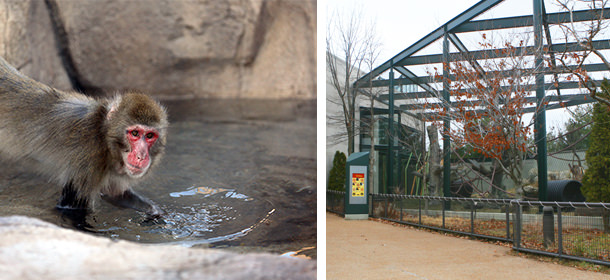
As engineers, we are always looking for creative and innovative ways to approach our projects. At the same time, we are passionate about designing facilities that meet the unique needs of the end user. While a new hospital pavilion needs to be functional for the hospital administrators charged with implementing the new facility, it also needs to be an optimal place of work for its healthcare professionals and a comfortable place to stay for its patients and guests. Likewise, a new elementary school needs to consider the needs of its adult teachers alongside the children they teach. But what happens when the end users have tails, trunks or paws? The design considerations change dramatically. Over the course of the past 15 years, Primera has had the good fortune to design a number of high-profile projects for area zoos. In the process, we’ve learned a great deal about unique and creative solutions that satisfy the needs of human visitors and zookeepers, but cater to animal welfare first and foremost. Each species is different. As a result, there’s a long list of factors that need to be considered for all projects, but here is a highlight of the lessons we’ve learned.
CAGE EVERYTHING IN // As buildings engineers, we don’t often focus on incorporating cages into our designs, but when it comes to zoo projects, it becomes a critical design component. Primera provided MEP design for Lincoln Park Zoo’s Regenstein Center for African Apes, the recently-opened Regenstein Macaque Forest and the new Polar Bear & Penguin Exhibits for which design is complete, but construction has yet to begin. In all instances, we’ve learned that all lights, diffusers, piping, and other MEP equipment must be designed to be completely durable and vandal proof. Metal mesh screens are regularly used to cover each of these components to prevent the animals from tampering with them. More often than not, the fixtures selected are high-security, confinement (prison) grade. In the case of the polar bear exhibit, polar bears can stand up to nearly 13 feet tall, so just about everything is within their reach. Similarly, chimpanzees, gorillas, apes and macaques (snow monkeys) are able to climb just about anywhere. So again, everything is within reach. For the primate habitats, metal mesh covers were actually placed over the entire exhibit to keep the animals from jumping or climbing out. Since animal safety is always a priority, the exhibit caging includes lighting protection and grounding elements.
WEATHER AND WATER PROOF IT // Animal exhibits are often indoor facilities, but they still need to function like the outdoor environments they’re designed to imitate. As a result, all fixtures, lighting specifically, need to be rated for outdoor use regardless of their location so they can hold up to the unique and unusual conditions these exhibits present. To that end, everything needs to be waterproof and corrosion resistant. In nature, the rain acts as a natural cleaning agent, but indoors, the zoo keepers are tasked with cleaning and maintaining the spaces. This requires available water sources throughout the exhibits. With that water used for cleaning or bathing, these exhibits and animal holding areas also regularly require automatic fill drinkers, so potable water sources need to be coordinated and incorporated into the design as well. Just as with the mesh caging, all water features in these exhibits, including pools or ponds, need to be grounded for animal safety.
On the contrary, artificial habitats also need to be protected from the natural weather conditions of their environment. In the case of the waterfoul lagoon at Lincoln Park Zoo’s Pritzker Children’s Zoo, Primera’s civil engineering team designed a unique underground detention system to collect storm water and avoid flooding of the man-made lagoon.
BEWARE OF LIGHTS AND SOUNDS // We’ve discussed how lighting fixtures need to be designed to withstand the elements of these faux-natural habitats as well as the natural curiosity of the animals and their tendency to tamper with everything, but the actual lighting has to be customized as well. In fact, both light and sound have to be looked at quite differently in animal environments. Unlike a classroom or office building, lighting levels need to serve a dual function. That is to say that they need to be suitable for staff cleaning and human usage, but the color temperature requirements also change based on animal type and need. The lighting levels need to mimic their natural environments as closely as possible. Lighting impacts the life safety systems as well. Fire alarms are always designed to minimize animal disturbances, so loud horns or sirens and bright, flashing strobes need to be avoided. Instead, sirens are designed for special frequencies and strobes must have amber or red lenses to avoid frightening the inhabitants. Also, heat detectors are used in lieu of smoke detectors as they are less likely to result in false alarms that would unnecessarily disturb the inhabitants.
HEAT THINGS UP // Speaking of heat, it plays a prominent role in zoo projects as well. Many of the animals aren’t native to Chicago and require artificial heating elements to mimic the natural environment. Though snow monkeys are native to cold climates, Chicago winters can get too cold and harsh for these creatures. The recently completed Macaque Forest features heated rocks in the outdoor area as well as heated pools to simulate hot springs that are native to Japanese snow monkey habitats. Similarly, Brookfield Zoo’s new primate exhibit (currently in the design phase) will include hydronic rocks in each of the baboon, meerkat and porcupine exhibits. The heated rocks in both locations dictate the need for specific power throughout the exhibits. Comparably, Brookfield Zoo’s new animal house (slated to open this summer), has a small building that houses owls and hawks. Since it’s not fully enclosed, Primera provided snowmelt to keep ice from building up to allow the birds to remain in their habitat throughout the cold icy winters.
We find that sizing water heaters for these types of projects can get very complicated if outdoor exhibit pools need a constant large supply of hot water quickly. In the Macaque Forest, two large 18kW electric spiral heaters were installed in the hot springs to maintain ideal temperature. In addition, the building water heating system allows for significant hot water wash-down capacity and quick replenishment of the hot spring water to reduce exhibit down time. As a side note, while not implemented in the final design, the exhibit’s original HVAC design consisted of a ground loop heat pump system using vertical geothermal wells that boosted energy efficiency and minimized unsightly rooftop equipment.
ENHANCE THE VIEWER EXPERIENCE // Zoo exhibits cater to the comfort and needs of the animals, but they also need to provide zoo patrons with a memorable experience. Engineering designs and architectural elements both play a critical role in the visitor experience. For example, the mechanical system at the Macaque Forest exhibit includes cooling zones on both sides of the visitor glass. The cooler temperatures draw the snow monkeys towards the window, placing them right in front of the visiting people.
A similar approach was taken at the ape house. For public interaction (and animal comfort), a fan coil unit was installed in both the public viewing area and the animal dayroom. The units are connected through a control sequence, and when activated by animal push button, the units blow cool or hot air, as selected by the animal, to both the public and the animals. Interactive designs like these continually evolve to the delight of the animals and the zoo visitors. In fact, when the north end viewing shelter opens, visitors of the Macaque exhibit will be able to watch the snow monkeys take sequencing tests on a pair of touch screens. The screens will be separated by a pane of “smart glass” that researchers will be able to turn transparent or opaque at the flip of a switch. Innovations like these and many other give the animals opportunities to utilize their intelligent brains while keeping guests engaged and entertained.
AIR QUALITY MATTERS // With millions of spectators visiting our zoos every year, optimizing the air quality for a diverse set of users proves to be a challenge. The systems need to keep the animals safe from human contamination or germs while simultaneously keeping the visitors safe from animal contamination. At the Regenstein Center for African Apes, Primera’s design utilized specialized filtration systems in each of the air-handling units in order to maintain high indoor air quality and odor control for the different spaces. The HVAC systems are controlled through a Direct Digital Control (DDC) system that is tied into the main system for Lincoln Park Zoo. In the same way, penguins are disease prone and have a very unpleasant odor, so the systems in the new penguin habitat are designed to keep the penguins healthy and the public semi-free from the foul odors. Individual mechanical zones keep a quarantine holding area from the other holding areas, preventing the spread of disease. Additionally, the building is provided with 100% outside air to keep the air clean and help minimize odor concerns.
There are dozens of other factors to consider when designing for these unique spaces for our animal friends. Knowledge and experience from these types of projects goes a long way, but it’s also important to engage and closely coordinate with specialty consultants that are experts in animal safety. These are not your typical engineering projects – and that’s part of the reason we like them so much. When else do you factor in putting padlocks on your drains to keep a monkey out or incorporate grates that consider the weight restrictions of a 1,000-pound client?






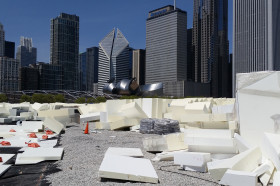
 Today's Parks Require Outside-the-Box Designs
Today's Parks Require Outside-the-Box Designs 
